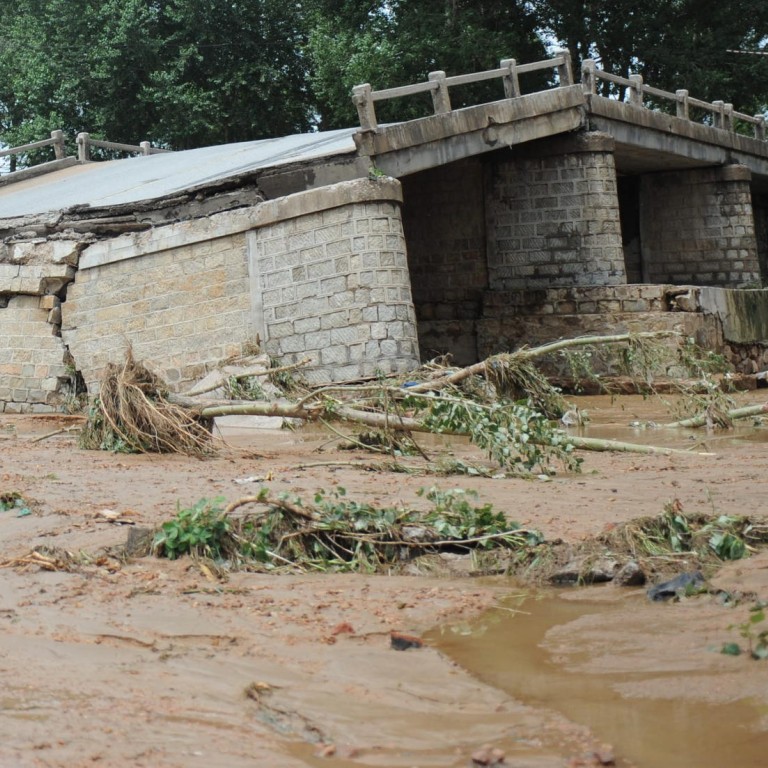
Four people die after highway bridge collapses in Fuxin, Liaoning
Deadly incident in Liaoning just the latest this rainy season; a lack of maintenance is blamed
Four people were killed when a highway bridge collapsed yesterday in Fuxin, Liaoning, and an expert said the high frequency of bridge mishaps this summer was abnormal.
The 44-year-old bridge - part of a national expressway linking Beijing and Shenyang - fell at about 2am, Xinhua reported.
Even with the best design, best technology, best science and best construction quality, a bridge's safety cannot be ensured without frequent checks and maintenance
Officials confirmed the death toll by noon and blamed the collapse on rain, but it was unclear how the people died or how big the bridge was. The water level in the Raoyang River, which flowed under the bridge, reached a record high on Monday after up to 100mm of rain fell in just three hours, according to the local government.
The floodwaters destroyed a support pillar and the bridge. The high level of water also resulted in three nearby bridges being closed off because of eroded foundations.
The collapse was the latest in a series of bridge accidents across the country during this rainy season, with many provinces reporting such accidents. In Sichuan , at least a dozen bridges collapsed last week amid a heavy deluge, Xinhua reported.
The most serious accident, in Jiangyou on July 9, killed at least a dozen people and as many vehicles fell into rapidly flowing water.
Professor Dan Danhui , who specialises in bridge design and safety at Tongji University, said from Shanghai yesterday that the high number of accidents was unusual, even after taking heavy rain into account.
He explained that the threats to bridges posed by rapidly flowing water have been known for hundreds, if not thousands, of years. And there are many solutions today to deal with structural and support issues, such as adding reinforcements.
"But even with the best design, best technology, best science and best construction quality, a bridge's safety cannot be ensured without frequent checks and maintenance," he said. "Checks and maintenance could have prevented many of the tragedies."
Compared with other countries such as the United States, China did not have a comprehensive and systematic bridge-monitoring system to ensure safety, Dan said.
Maintenance does not receive enough support and there are limited resources. And Dan pointed out a tendency by local officials to boost infrastructure, but not maintain it properly.
"Building a new bridge looks good on a political record. It is there to be seen, touched and shown off," Dan said. "But bridge maintenance is less glorious. It is always secondary on the government's to-do list. That's why it can't receive sufficient funding or staffing."
Governments also refused to outsource the maintenance work to private companies that were more efficient and technologically advance, instead opting to give the jobs to state-owned firms or institutions within their jurisdiction, Dan said.
"If the government introduces a market mechanism to ensure the safety of bridges, the situation would improve significantly," he said. "It would create a lot of jobs, too."
Each year China built more bridges than any other country, Xinhua said. And the majority of those bridges were constructed within the past two decades.

